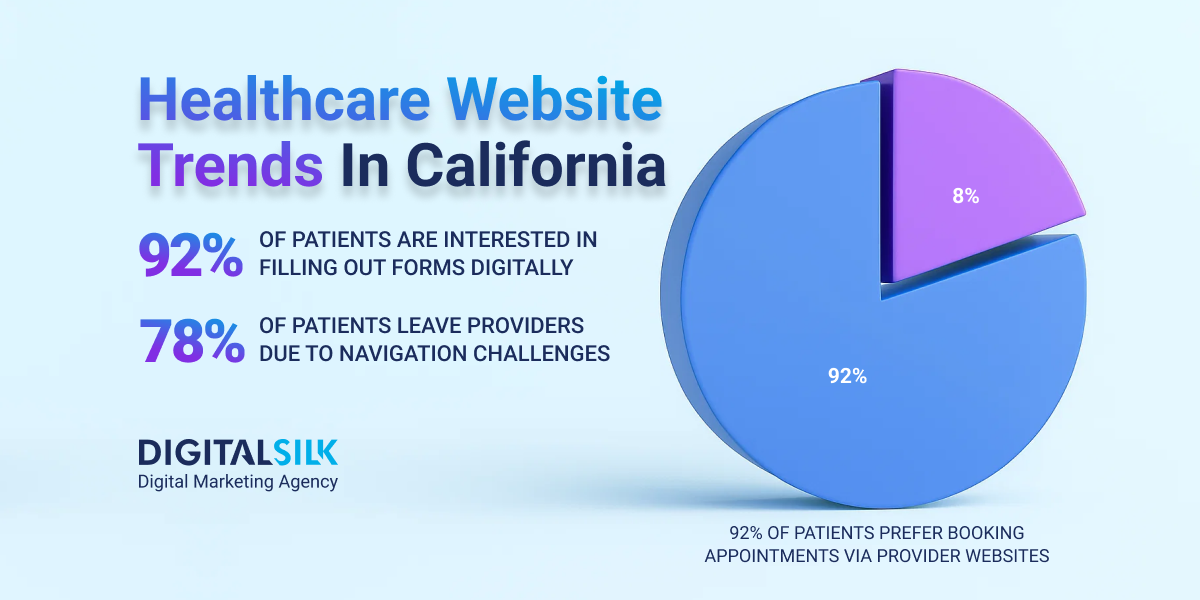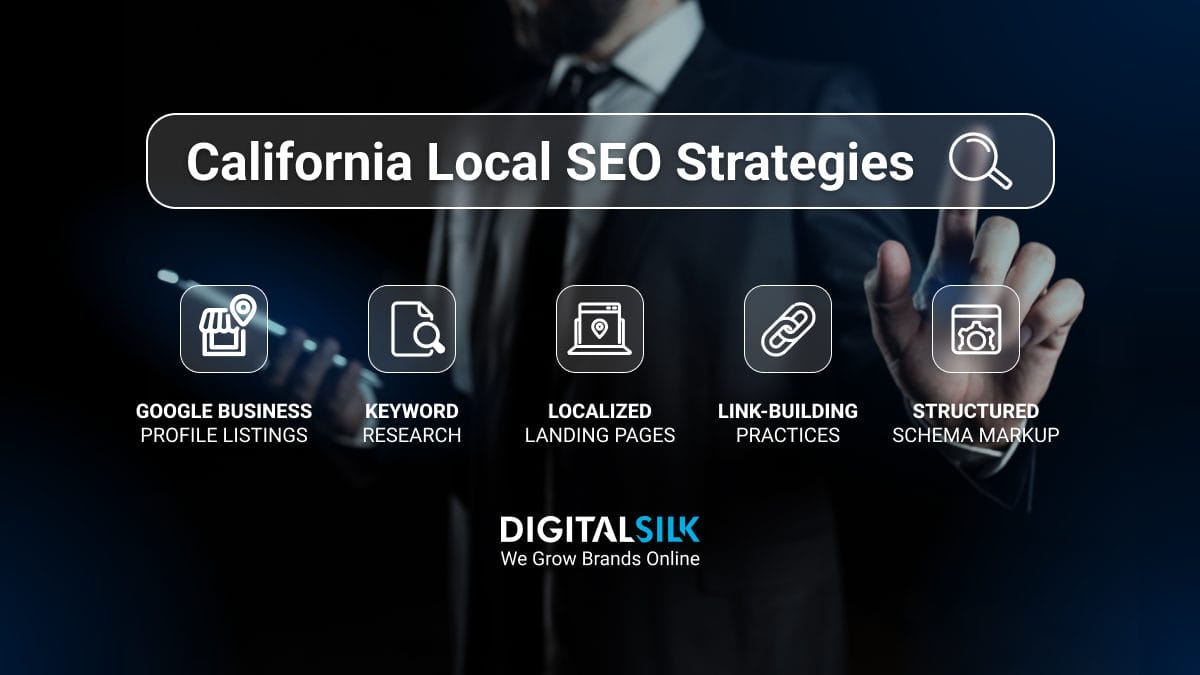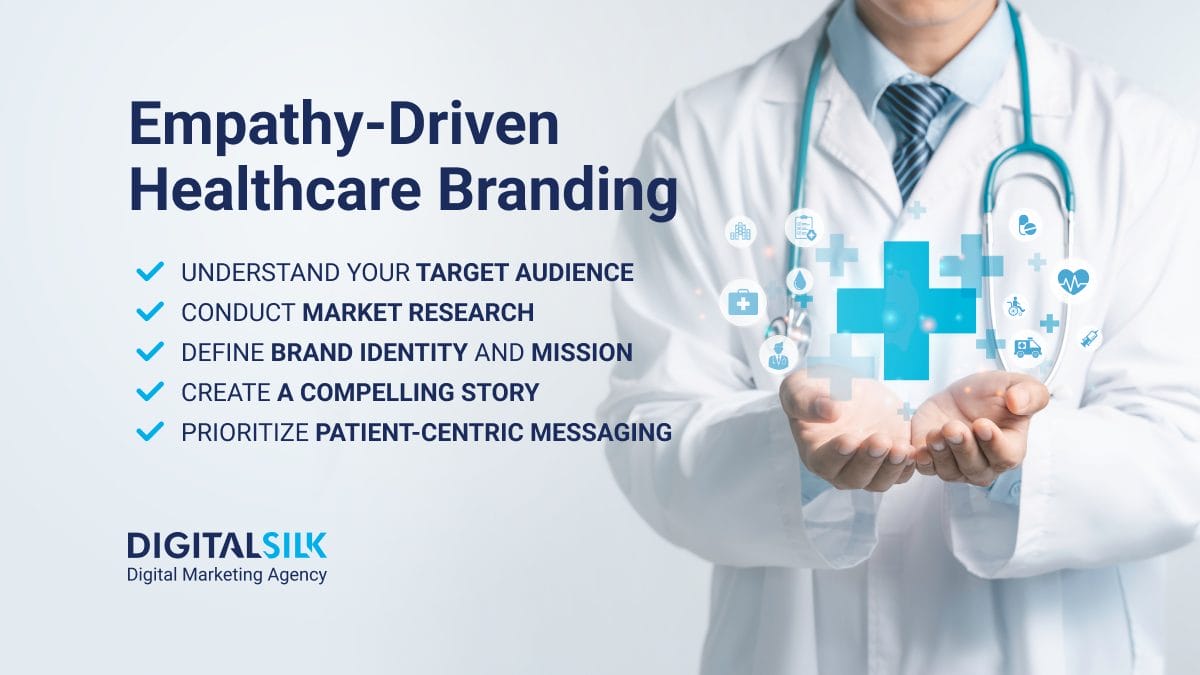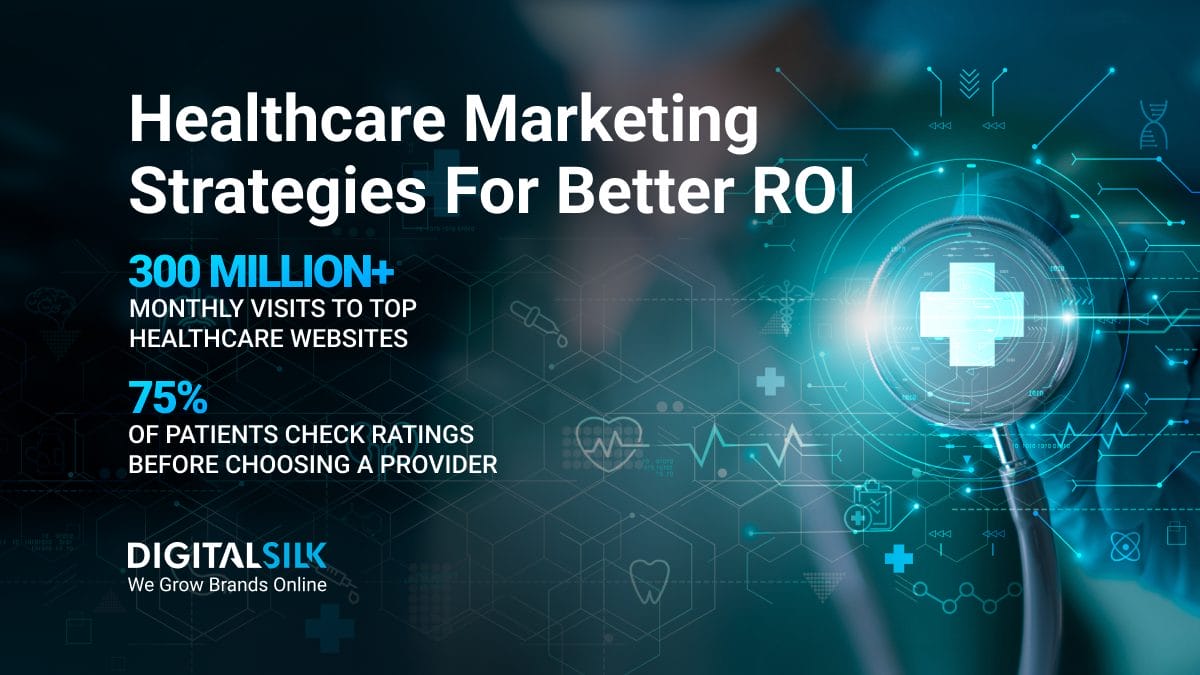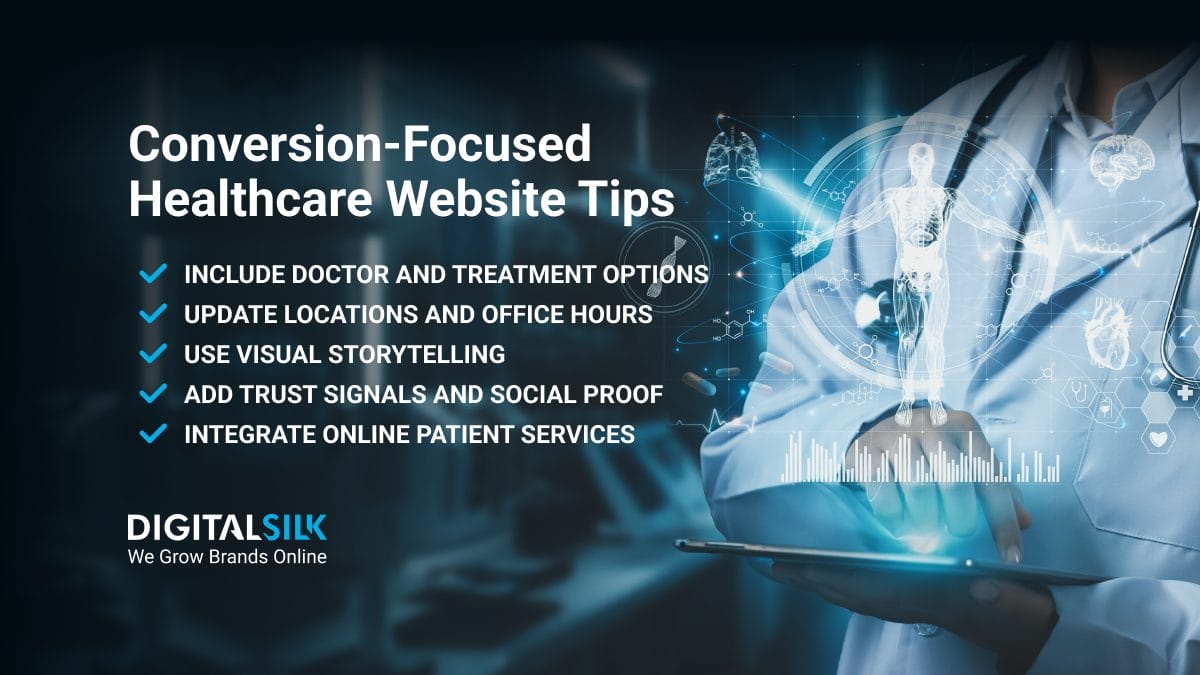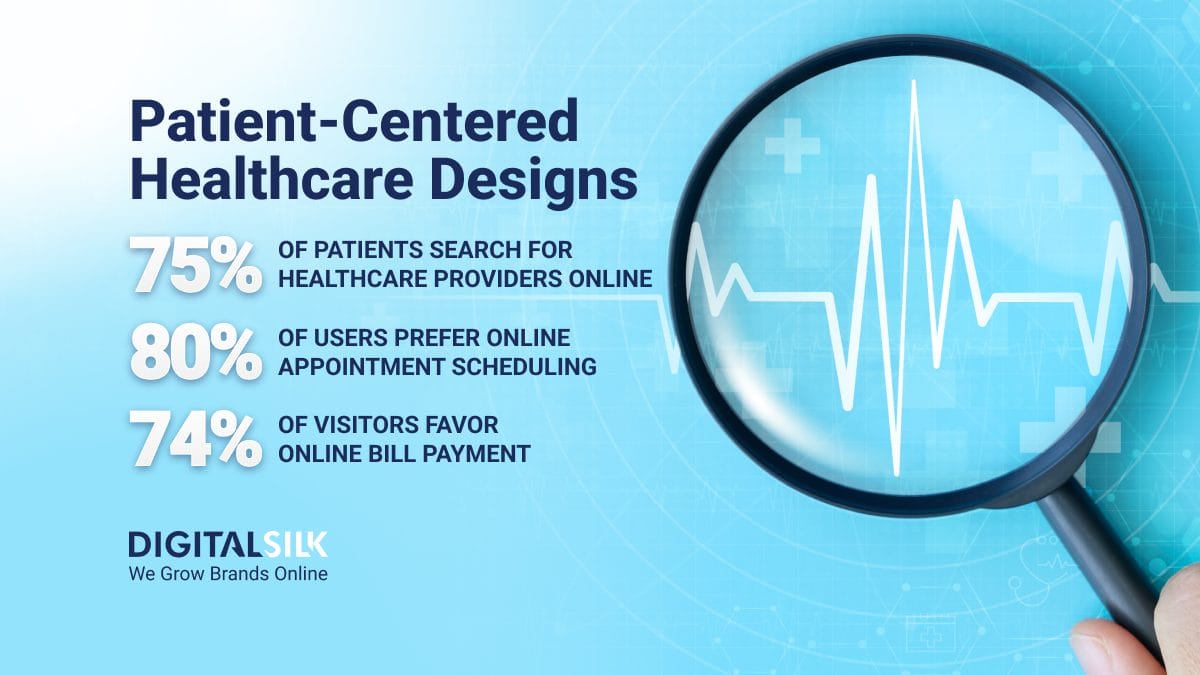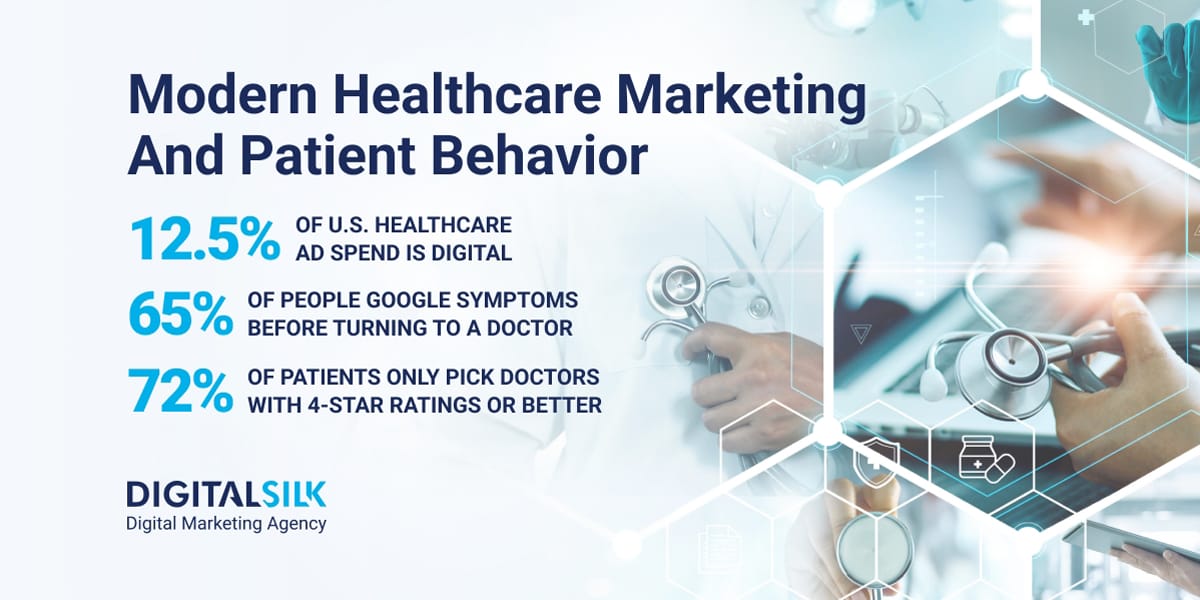Healthcare Website Trends In California: Key Highlights
-
92% of consumers want to schedule appointments online, yet 50% say their provider doesn’t offer that option.
-
Only 4.9% of U.S. hospital websites meet full Web Content Accessibility Guidelines (WCAG 2.1) compliance, putting many at legal risk.
-
96% of hospital websites track visitor data through third-party tools, but nearly 30% lack a publicly accessible privacy policy.
California’s healthcare providers are facing a digital shift that’s accelerating faster than most realize.
With projections showing 306.7 million digital health users in the U.S. by 2029, patient expectations for seamless, accessible and personalized web experiences are rising in parallel.
Healthcare practitioners who once saw their websites as informational placeholders are now finding them to be make-or-break points for patient trust and engagement.
In this post, we’ll explore the key statistics that influence healthcare website trends in California to help organizations rethink how they connect with and serve their patients online.
Patient Expectations For California Healthcare Websites
Patient expectations are setting a new standard for healthcare UI trends in California, with digital convenience now playing a direct role in how they choose and stay with their providers.
From online scheduling and bill payments to accessing medical records and virtual care, both national statistics and California-specific data point to a shift in how patients engage with healthcare services.
The stats below reveal which digital features patients value most and where many healthcare organizations are still falling short.
- 93% of patients say provider reviews are at least somewhat important and 34% of them go to the practitioner’s website to find them.
- 92% of consumers are interested in scheduling appointments online through provider websites.
- 50% of patients said they couldn’t schedule appointments online because their hospital, health system or provider didn’t offer the option.
- 48% of those who skipped care in the past year would switch providers for the ability to book appointments online.
- 92% of patients are willing to fill out forms digitally, reducing wait times and improving overall experience.
- 73% of patients have access to a patient portal, while 68% of those without it say they’d like the option.
- 70% of patients say access to medical records is what they like most about patient portals.
- 94% of consumers are willing to return for future virtual health appointments.
- In 2024, 51% of healthcare organizations offer more virtual care options to accommodate growing patient demand.
- 79% of users choose online appointment scheduling as their preferred digital touchpoint.
- 78% of people left their provider due to navigation challenges, including digital and support services that didn’t meet their needs.
- 75% of patients look for healthcare providers online, often checking their websites in the process.
- 74% of patients want the convenience of paying their medical bills online.
- 74% of Millennials are willing to switch providers to get a better payment experience.
- Younger adults in the U.S. are the least tolerant of poor digital service, with 61% of patients aged 18 to 24 saying they would consider switching providers over a bad digital experience.
- 29% of them have already switched providers due to a poor digital experience, compared to just 6% of seniors aged 65 and older.
- About 60% of people in the U.S. were given access to and used their online medical records or patient portals, with frequency of use continuing to rise.
- 58.5% of U.S. adults used the internet to search for health or medical information.
- 46.7% of California adults have used telehealth tools such as video appointments, online consultations and secure messaging, highlighting the need for responsive and patient-friendly healthcare websites.
- 42.5% of these users accessed telehealth tools for follow-up appointments and to view test results.
- 42% of Californians say their community doesn’t have enough primary care providers.
- This concern is even higher among Californians with low incomes, with 50% reporting a shortage compared to 41% of higher-income residents.
The Implications On Healthcare Website Trends In California
- Your website is part of the care decision process. Patients actively check provider websites for reviews, appointment options and service details before making a choice, meaning poor design or missing features can translate directly into lost business.
- Online scheduling isn’t optional anymore. With scheduling access ranking as one of the top reasons patients switch providers, making this process fast, intuitive and mobile-friendly should be a top priority.
- Billing interfaces need serious attention. With nearly three-quarters of patients wanting online bill payment, and Millennials willing to switch providers for better payment experiences, outdated billing tools could be costing you revenue and retention.
Providers’ Perspectives On California Medical Website Trends
Your healthcare website in California is often the first digital tool that patients use to form opinions about your brand’s core values, beliefs and commitment to patient-centered care.
As telemedicine, self-scheduling and patient portals move from nice-to-have features to patient expectations, the challenge is no longer whether to offer them but rather how to integrate them properly.
Poor navigation and clunky interfaces are now real reasons patients hesitate, disengage or even switch providers.
The following statistics show how organizations are adjusting their digital strategies to meet both operational demands and rising patient expectations.
- 91% of U.S. hospitals have adopted telemedicine, integrating it into both practice workflows and their websites.
- 71% of providers consider self-scheduling an urgent priority for their website.
- However, 55% of them say patients have difficulty navigating self-scheduling systems.
- 37% of practitioners cite driving patient engagement with digital tools as one of their top three access concerns.
- 64% of providers are using patient portals to improve the overall care experience.
- 42% of medical practitioners in the U.S. use both AI and rule-based chatbots on their websites.
The Implications On Healthcare Website Trends In California
- Telemedicine needs thoughtful website integration. Simply offering virtual care isn’t enough, since patients expect clear, frictionless ways to find and access these services online.
- Self-scheduling tools must prioritize usability. With over half of providers reporting patient navigation issues, investing in user-centered design is key to meeting expectations.
- Patient engagement starts with digital touchpoints. Providers listing engagement as a top concern should treat their website as a primary driver for improving communication and access.
Data Privacy & Accessibility As Healthcare Web Design Trends
Medical website trends in CA reveal a clear disconnect between patient trust and how provider websites handle privacy and accessibility.
While nearly all hospital sites track user behavior through third-party tools, a significant number fail to offer clear privacy policies or meet basic accessibility standards, putting both patient experience and legal compliance at risk.
The following statistics illustrate why addressing these issues is no longer a technical afterthought, but a core part of modern California medical web design.
- 96% of U.S. hospital websites use tracking technologies that share visitor data with third parties (e.g. Meta, Google).
- However, just 71% offered a publicly accessible privacy policy, raising privacy compliance concerns and highlighting a gap in transparency and patient data protection.
- Only 4.9% of U.S. hospital websites meet the latest Web Content Accessibility Guidelines (WCAG 2.1), while nearly 80% are merely partially compliant.
- 70% of cyber claims payments in the healthcare industry result from ransomware incidents.
The Implications On Healthcare Website Trends In California
- Patients expect clarity on how their data is used. Vague or missing privacy policies can damage trust and leave your organization exposed to legal action.
- Third-party tracking requires full transparency. With most hospital websites sharing visitor data, disclosing this practice and offering consent options is becoming a patient expectation.
- Accessibility gaps put your organization at risk. Falling short of WCAG 2.1 compliance not only limits patient access but also increases vulnerability to lawsuits.
Why Patient-Centric Website Design Matters In Healthcare
Modern healthcare websites in CA are driving real business outcomes for providers who treat them as more than just informational tools.
They’re now central to how patients judge your services, interact with your brand and decide whether to take the next step in their care journey.
Here’s why conversion-focused websites are becoming a healthcare marketing priority across California:
1. Reflects Your Core Identity
Patients in California are evaluating providers online with more attention to detail than ever before.
Your site should express your values, care philosophy and level of professionalism through design, messaging and user flow.
2. Improves User Experience
Patients aren’t visiting your site to browse, they’re there to take action.
Whether it’s booking appointments, finding contact information or accessing patient portals, your website should make every step intuitive and frustration-free.
3. Reduces Patient Drop-Off
Navigation, speed and clarity are no longer just technical details.
Slow load times and confusing site structures are causing patients to leave before they book, especially among younger audiences in California.
4. Strengthens Mobile Performance
With 61.5% of global traffic coming from smartphones, mobile responsiveness is non-negotiable.
Your site should load fast, display cleanly and support easy navigation across all device types.
5. Maximizes Healthcare Marketing ROI
Every paid search ad, local SEO effort and social campaign sends users back to your website.
If the experience they land on doesn’t match their expectations, even the most carefully planned campaigns will struggle to convert and fail to yield positive ROI.
6. Supports Compliance and Trust
Accessibility and privacy standards are now patient expectations.
Falling short in these areas not only risks legal trouble but also creates barriers that undermine trust and reduce conversion rates.
Cutting-Edge Trends For Healthcare Website Design In CA
California healthcare providers are leading the adoption of advanced digital tools to streamline care and enhance patient experiences.
Beyond standard appointment booking and portals, modern healthcare websites are evolving to include AI-powered features and immersive technologies, such as:
- AI Chatbots: Over 80% of consumers used a chatbot or voice assistant for healthcare support last year. California providers are adopting chatbots to handle routine questions, triage requests and patient intake to reduce strain on frontline staff.
- Voice-Activated Booking: Clinics are piloting voice-enabled scheduling and account access through smart speakers and phones. This meets growing demand for low-barrier, accessible communication, especially for older adults and people with disabilities.
- AR & VR for Patient Prep: Hospitals are using virtual tours and treatment walk-throughs to help patients understand care options before arrival. This reduces anxiety and lowers no-show rates.
Real-World California Website Inspiration
Several California-based healthcare organizations stand out for how they bring patient-first design to life.
These healthcare website design examples in the Golden State offer strategic takeaways for providers planning their next redesign:
1. Cedars-Sinai (Los Angeles)
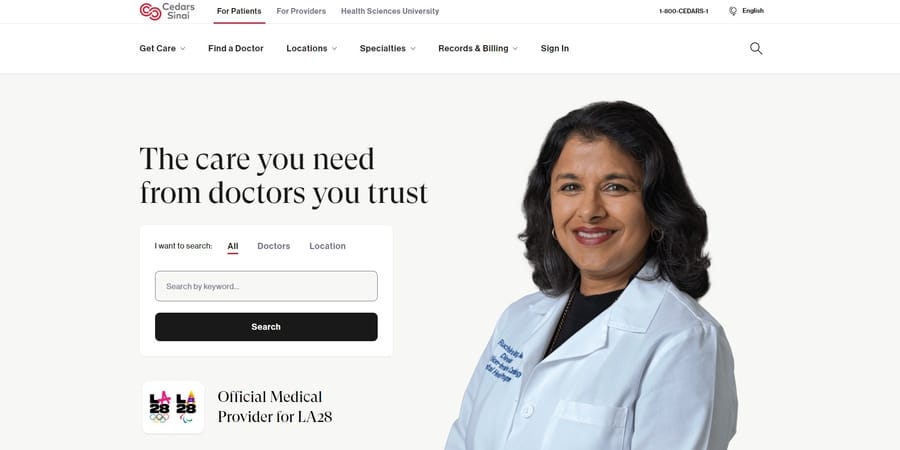
A sleek mega-menu, mobile-friendly navigation and integrated patient portal access make Cedars-Sinai’s site a model of modern hospital UX.
Their homepage directs users quickly to virtual care, find-a-doctor tools and service lines without visual clutter.
2. Sharp HealthCare (San Diego)
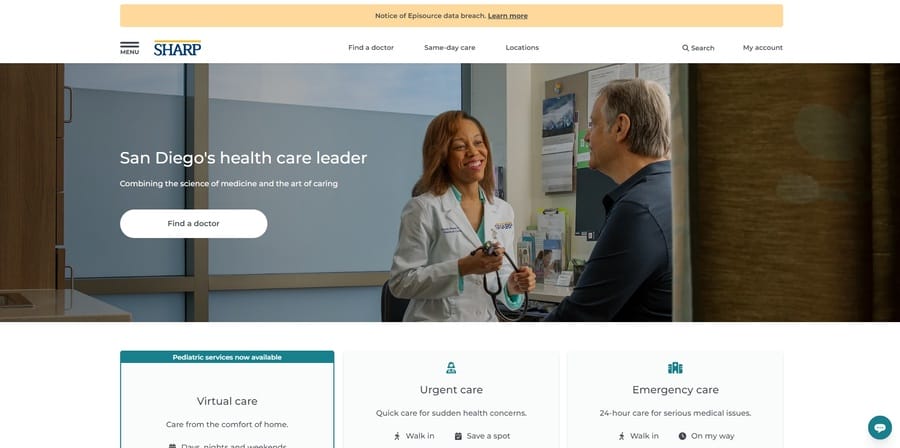
Sharp Healthcare’s site combines muted green hues with subtle animations and strategically placed calls-to-action (CTAs) that guide users without overwhelming them.
The site offers quick information on available doctors for both in-person and virtual care treatment, along with insurance coverage details.
3. Sansum Clinic (Santa Barbara)
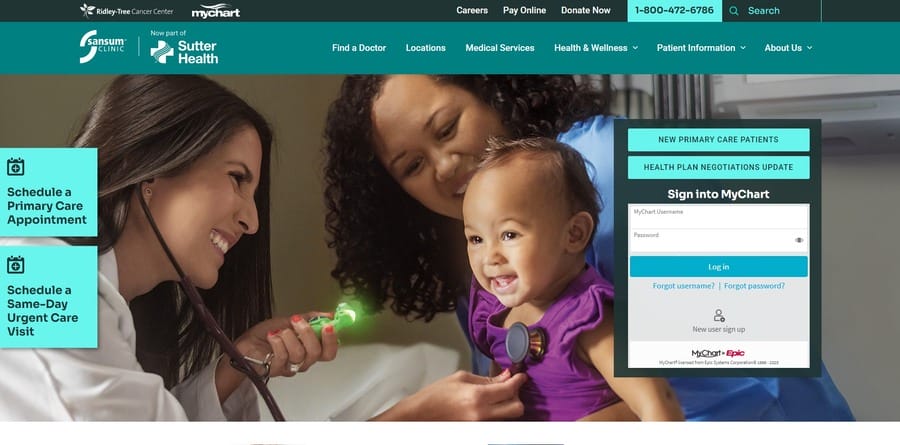
Sansum Clinic‘s healthcare website features a clean, teal-accented design with intuitive navigation, so it’s easy for users to find doctors, schedule appointments and access health services.
The integrated MyChart patient portal offers secure login for managing medical records, appointments and communication with care teams.
Color & UX Best Practices In Healthcare Website Design
The user experience (UX) of a healthcare website has a direct impact on patient trust, comfort and engagement.
Across California, leading healthcare providers are using intentional color choices and streamlined design elements to create digital spaces that feel approachable, calming and easy to navigate.
Calming, Trust-Building Color Palettes
Blues and soft greens are the most common color choices across top healthcare websites in California, consistently signaling trust, safety, and healing.
These hues help reduce patient anxiety by creating a sense of calm and reassurance.
Neutral backgrounds with minimal accent colors are often used to keep visual distractions low, allowing patients to focus on essential information and actions like scheduling or finding care.
UX For Patient Ease And Emotional Comfort
Healthcare UX in California is shifting towards simplicity and emotional reassurance.
Clear typography, generous white space and consistent navigation patterns help reduce cognitive load for patients already managing health concerns.
Subtle visual cues like soft hover states and intuitive iconography can guide users effortlessly through appointment scheduling, provider searches and accessing care resources.
Accessibility As A Core UX Principle
Although full WCAG 2.1 compliance is still rare, more California providers are making accessibility part of their core UX strategy.
Features like high-contrast mode toggles, screen reader optimization and adjustable font sizes are becoming more common, helping ensure all patients, regardless of their abilities, can access care online without barriers.
Design Your California Healthcare Website With Digital Silk
Designing a healthcare website in California requires meeting patient expectations, driving engagement and supporting your broader healthcare marketing goals.
From usability and accessibility to privacy and conversion-focused design, every detail plays a role in building trust and growing your patient base.
Digital Silk’s in-house healthcare web design team specializes in creating custom, strategy-driven websites that help California providers turn visitors into loyal patients.
As a professional web design agency, our services include:
- Web design for healthcare providers
- Custom web design
- Custom web development
- Branding services
- Digital marketing for healthcare providers
Our experts handle every project with proactive leadership and clear communication to deliver measurable outcomes.
Contact our team, call us at (800) 206-9413 or fill in the Request a Quote form below to schedule a consultation.
"*" indicates required fields


